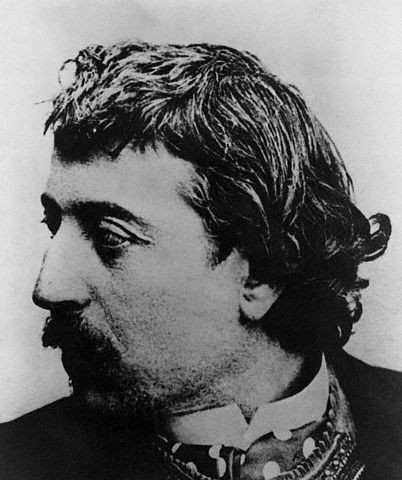 Paul Gauguin
Biography
Paul Gauguin
Biography
Eugene Henri Paul Gauguin was a Post-Impressionist painter. Paul was born on June 7, 1848 in Paris, France and is best known for his experimentation of combining arts into modern art to capture the core of his drawings. He was influenced by the colonist style of painting, which opened the door to a primitivism style of work and later back to pastoral. More than just a painter, Gauguin influenced wood engraving and woodcuts as a form of art.
In 1851, Paul's family moved from France to Peru, due to their current political times. His father died during the travel to Peru, which left his mother and sister to fend for themselves. Paul lived in Peru with his uncle and remaining family. A place that would later influence some of Paul's art.
At the age of seven, Paul moved back to France, where he began to learn French and did very well in his studies. When Paul turned seventeen, he signed up as a merchant marine where he was a pilot's assistant. After three years he joined the navy, serving for just two years. In 1871, he returned to Paris and became a stock broker. In 1873, he married a woman named Mette Sophie Gad and had five children.
Ever since Gauguin was a child, he was interested in art, painting in his free time and visiting art galleries. Paul would also buy work from up and coming artists, around this time he developed a friendship with Camille Pissarro, who would introduce him to other artists. Over time Gauguin rented a studio and showed his paintings in impressionist exhibitions from 1881 to 1882. In 1884, Gauguin and his family moved to Copenhagen, where he once again chased a business career as a stock brocker. In 1885, Paul left his family in Denmark and moved back to Paris.
In 1887, Paul spent several months in Saint Pierre in Martinique, with his artist friend Charles Laval. The two lived in a place together, referring to it as the 'negro hut'. During his stay, Paul would put out between ten and twenty pictures a day. He traveled all over the city and eventually fell into contact with a small community of indian immigrants. The meeting influenced Gauguin to begin incorporating indian symbols into his artwork. While in Martinique, he would suffer from dysentery and marsh fever.
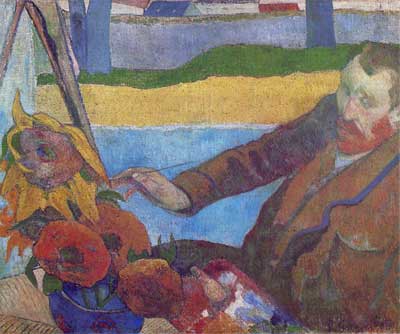
Van Gogh Painting Sunflowers
by Gauguin
One of Paul's best friends was fellow artist, Vincent Van Gogh. Much like Van Gogh, Paul also suffered from severe depression, even attempting suicide one time.
Gauguin would later tire of impressionism, so he turned to African and Asian art styles. At the time, there was a big calling for other cultures of arts in Europe.
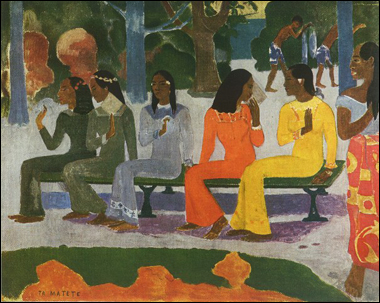
Paul was invited to be a part of the 1989 exhibition organized by Les XX.
Later, Gauguin made a move back towards Cloisonnism, an art that was named by Edouard Dujardin. After that, Paul began to
take his style towards a Synthetism style.
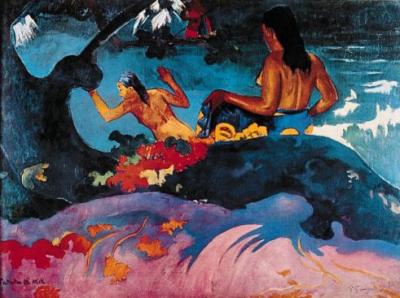
In 1891, Gauguin moved to a village in Tahiti and painted "Fatata te Miti", "Ia Orana Maria", and other parts of Tahitian life.
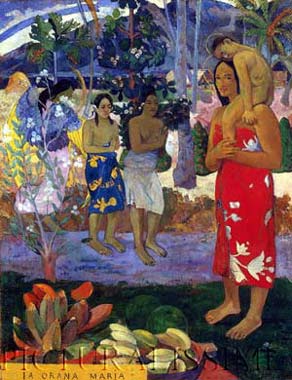
Paul moved to Punaauia in 1887, where
he painted "Where Do We Come From". He then lived the remainder of his life in the Marquesas Islands and only went back to
France once. In 1903, Paul was sentenced to three years in prison because of problems with the church and government. However, he died
before sitting his prison sentence out.
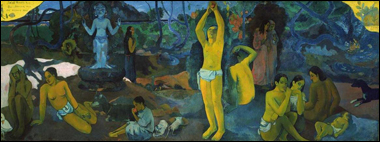
Paul Gauguin died on May 8, 1903, due to syphilis. He was only 54 years old and is buried at Calvary Cemetery in Atuona,
Hiva 'Oa, Marquesas Islands, French Polynesia.

